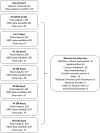Impact of maternal characteristics on human milk oligosaccharide composition over the first 4 months of lactation in a cohort of healthy European mothers
- PMID: 31409852
- PMCID: PMC6692355
- DOI: 10.1038/s41598-019-48337-4
Impact of maternal characteristics on human milk oligosaccharide composition over the first 4 months of lactation in a cohort of healthy European mothers
Abstract
Human milk oligosaccharide (HMO) composition varies among lactating mothers and changes during the course of lactation period. Interindividual variation is largely driven by fucosyltransferase (FUT2 and FUT3) polymorphisms resulting in 4 distinct milk groups. Little is known regarding whether maternal physiological status contributes to HMO variability. We characterized the trajectories of 20 major HMOs and explored whether maternal pre-pregnancy body mass index (ppBMI), mode of delivery, or parity may affect milk HMO composition. Using longitudinal breastmilk samples from healthy mothers (n = 290) across 7 European countries, we characterized HMO composion and employed mixed linear models to explore associations of maternal characteristics with individual HMOs. We observed HMO-specific temporal trajectories and milk group dependencies. We observed relatively small but significant differences in HMO concentrations based on maternal ppBMI, mode of delivery and parity. Our findings suggest that HMO composition to be regulated time-dependently by an enzyme as well as substrate availability and that ppBMI, mode of delivery, and parity may influence maternal physiology to affect glycosylation marginally within the initital period of lactation. Our observational study is the largest European standardized and longitudinal (up to 4 months) milk collection study assessing HMO concentrations and basic maternal characteristics. Time of lactation and milk groups had the biggest impact on HMO variation. Future studies need to elucidate these observations and assess the physiological significance for the breastfed infant.
Conflict of interest statement
T.M.S., A.B., S.K.T., C.A.C., S.A., N.S. are employees of Société des Produits Nestlé S.A.; M.A., I.A.J., M.J.C., M.D., G.M., C.M.C., J.C.P., T.S., S.M.S., M.V., C.B. received funding from Société des Produits Nestlé S.A. to conduct the study.
Figures





References
Publication types
MeSH terms
Substances
LinkOut - more resources
Full Text Sources
Other Literature Sources
Molecular Biology Databases

